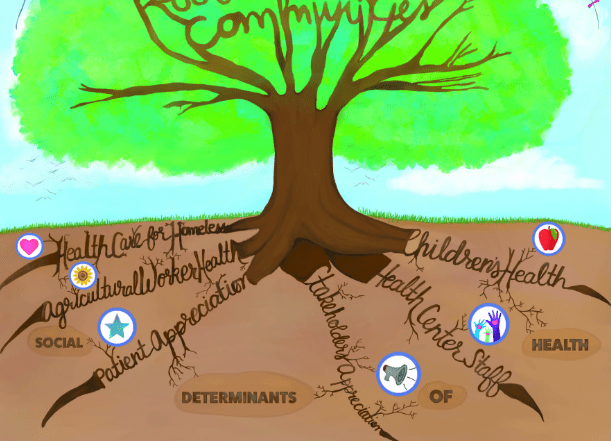Why Conduct a Community Health Needs Assessment?
What exactly is a needs assessment, and why would an organization expend the time and energy to do one?
It’s a new year, and nonprofits across the sector are starting to think about what they are going to accomplish over the course of the year. For many organizations, this might include conducting a thorough needs assessment. But what exactly is a needs assessment, and why would an organization expend the time and energy to do one?
What is a Needs Assessment?
A needs assessment is exactly what it sounds like: an assessment of needs. Typically, nonprofits use needs assessments as a way of identifying the needs in a community, the services and assets available to address the needs, and the remaining gaps or unmet needs.
The community can be defined geographically, like a specific county or set of zip codes. Alternatively, the community might be defined as a specific demographic or population group or group of individuals who share some other relevant characteristic, such as children, immigrants, people identifying as American Indian, veterans, people with cancer, or people experiencing homelessness. Often, the focus is both, such as low-income individuals within a defined geography or immigrants within a defined geography. It depends entirely on the nonprofit and its mission.
In the nonprofit health sector, these assessments go by many names and can look a little bit different depending on the type of organization:
- Hospitals typically conduct “community health needs assessments”
- Local public health departments develop “community-based health needs assessments” or “community health assessments” or “community health improvement plans”
- Federally Qualified Health Centers (FQHCs) also conduct “needs assessments” according to specific requirements
Needs assessments usually include, at a bare minimum, quantitative data that describes the community’s needs, compiled into a written report. However, they can also include much more, including qualitative data and secondary sources or literature. Many organizations also have a strategic planning, program planning, and community health improvement planning element to their assessments.
Top Five Reasons to Conduct a Needs Assessment
Now that you know what a needs assessment is, let’s consider why an organization might conduct one. There are quite a few reasons an organization might conduct a needs assessment and even make doing so a top priority.
1. It’s a requirement
Not to state the obvious, but the first and most common reason for conducting a needs assessment is that it is often required. Lots of organizations do needs assessments purely for compliance reasons.
For local health departments, it is often required for accreditation; for example, in Illinois, health departments are required to conduct a needs assessment every five years. These needs assessments usually follow one of a couple processes like MAPP and have strong strategic planning or health improvement components to them.
For tax-exempt hospitals, needs assessments are required by the ACA. They also have to include strategies to improve the community’s health and provide community benefits, and include input from “persons who represent the broad interests of the community.”
For FQHCs, needs assessments are required every three years by HRSA, and are often timed to be completed just prior to a Federal site visit or grant renewal application so that the data is brand new. These can range from very basic to a more comprehensive mixed-methods assessment.
Just because a needs assessment is required, though, doesn’t mean your organization has to do the bare minimum. For example, many health centers find that even though their most compelling reason for doing an assessment is to avoid falling out of compliance, their leadership gains tremendous value from adding qualitative measures or clinical quality performance comparisons to their assessment rather than doing only what HRSA requires.
2. To design or make the case for a new program or service
One of the slightly deeper reasons a nonprofit might conduct a needs assessment is to design or make the case for a new program or service.
Say your nonprofit wants to start a new program or service. Maybe it’s completely new! Or, maybe it’s more of an expansion of an existing service you offer, but you want to bring it to a new population group, add another level of the service, or deliver it in a new format, like group versus individual.
Either way, how do you know that your new program or service is needed? And how do you ensure it’s well-designed to meeting the need?
A needs assessment can help you better understand:
- Who needs the service
- Where, when, and how they need the service
- What existing programs are meeting the need and where/why they fall short
- The perspectives of people affected, or those who work in the field
With a solid understanding of the need, you can better design your program to be responsive, as well as better articulate the rationale for the program to your board members, donors, and funders.
3. To determine or make the case for a new site
Just as your nonprofit might want to do some research on the need when establishing a new program or service, the same premise applies to opening a new site. A needs assessment can be instrumental in helping you determine or make the case for a new site.
A needs assessment can help you determine:
- Where geographically do the people you want to serve live?
- Where are there the greatest pockets of need or health disparities?
- Where are there service gaps or “deserts”?
- Where are people most struggling to access services due to transportation barriers or other issues?
- Which services are needed in which areas?
- What does your site require to meet the needs (like specific types of spaces or rooms or accommodations)?
Doing a needs assessment allows you to make the case for the geographic area being high-need, whether in terms of the number of people who need your service, or the depth of disparity or unmet need. It also helps ensure you’re not building your senior center in an area that isn’t easily accessible by transit, or locating a pediatric clinic in an area with few young families.
4. To better align services to needs
So, we’ve discussed how if you are opening a new site or launching a new service, you’d want to know that it is the right service in the right location. But even if you’re doing the same old, same old thing your nonprofit has always done, you will want to make sure your work is well-aligned to the needs.
A needs assessment can answer questions about the alignment of your programs and services like:
- Is it offered in the languages spoken in the community?
- Is it offered at the times the community needs it offered?
- Is it addressing other access barriers, like transportation or child care or cost?
- Is it responsive to customer service issues, patient complaints, or other feedback from your target population?
- Does it complement or supplement other area services rather than duplicate them?
- Is it missing a major unmet need that you could address?
Getting the answers to these questions can lend tremendous insight into your current work and give you ideas for how to improve upon it.
5. To better understand the community’s perspectives
All of these are compelling reasons to conduct a needs assessment, but I’ve saved my very favorite reason for last: to better understand the community’s perspectives.
Who understands the needs of the community better than… the community itself? Hearing directly from local residents or people affected by a particular issue is one of the most important reasons to do a needs assessment.
You can gather community feedback through a whole range of qualitative methods that I’ll discuss in a future post – interviews, focus groups, town halls, and surveys. Each method has it’s own pros and cons, and mixing methods can be a great way to capitalize on the strengths of each method.
And while not all needs assessments include one or more of these methods of pulling direct feedback from the community, I’d argue that it’s a real missed opportunity if you don’t incorporate at least some community perspectives into your assessment! You’ll never fully appreciate how the community understands its own needs if you don’t ask them.
What’s your organization’s approach to needs assessments? Are you doing it just for compliance or gleaning lots of insights? And if you need support with an upcoming needs assessment, schedule a call below or click here to learn more about the different ways we can help.





